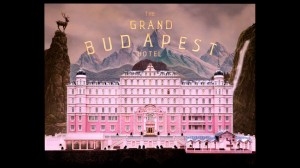
By Dana Sternthal
News Editor
Director Wes Anderson has defined himself amongst his peers through his quirky sense of humor and original visual styles. Thankfully, such identity appears to be in no way fading, as Anderson’s latest release, “The Grand Budapest Hotel,” is a testament to Anderson’s originality.
“The Grand Budapest Hotel,” both co-written and directed by Anderson, delights with eccentric, distinct characters, accompanied by its elaborate narrative, capturing the audience’s attention from the beginning to end. The film proves to be a successful balance of nostalgia and upbeat humor with a serious narrative.
Set during the 1960s, the film follows an aged Zero Moustafa (F. Murray Abraham), who tells the story of how he came to acquire the Grand Budapest Hotel from his mentor and concierge, Monsieur Gustave (Ralph Fiennes). He recounts a series of unfortunate events, in which Gustave is arrested for the murder of a wealthy customer, and then escapes with the help of Zero, a young lobby boy (Tony Revolori).
Fiennes shines as the morally-ambiguous concierge of the hotel, a character who adds to the sentimental and offbeat film. While Gustave is prone to an often-grandiose personality, he subtly alters his behavior to indicate a caring side to his persona, while not entirely changing his overall pretentious disposition. Throughout the movie, the viewer gets the sense of how deeply he cares for his pupil Zero, something that adds morality to empathize with an otherwise despicable character.
The intricately-layered narrative serves to add depth to the film overall. The movie changes narrators numerous times. Seeing the unfolding events through different perspectives adds greater detail to each individual. This approach allows more information to be shared with the viewer, heightening the dramatic irony of the film.
Another unconventional aspect of the film is Anderson’s use of handmade models for the setting. The shots of the Grand Budapest Hotel from the outside are created using a miniature model of a picturesque pink hotel. This, along with the use of vibrant colors, accents the more surreal aspects of the story. It subtly reminds the viewer of the unbelievable circumstances that the characters find themselves in, which makes the movie endearing, quaint and entirely representative of Anderson’s thoroughly distinctive approach toward directing.
However, the film is not confined to simply being bizarre, as Anderson is able to make political statements by drawing parallels to the Nazi takeover of Germany. There are scenes of a military regime’s insidious sequestration of trains and the hotel itself.
The real-world implications of such a set up serve to ground the film without taking away too much of the charm. Anderson strikes an appropriate balance between the main story line and a thought-provoking political sub-point, a feat that gives the film intellectual weight while still allowing it to be a whimsical and quirky movie.
“The Grand Budapest Hotel” is overflowing with personality and creativity. Its original nature and layered plot are counterbalanced by its historical connections and coupled with Fiennes’ strong lead performance. The film is more than deserving to stand with Anderson’s past greats.
“The Grand Budapest Hotel” is rated R and is now playing in select theaters.




Leave a Reply